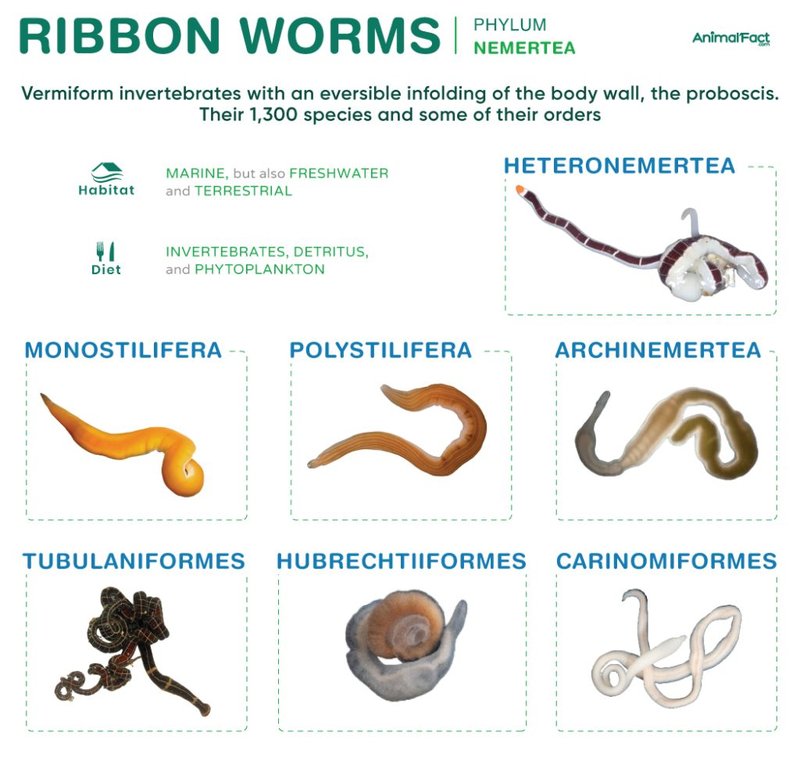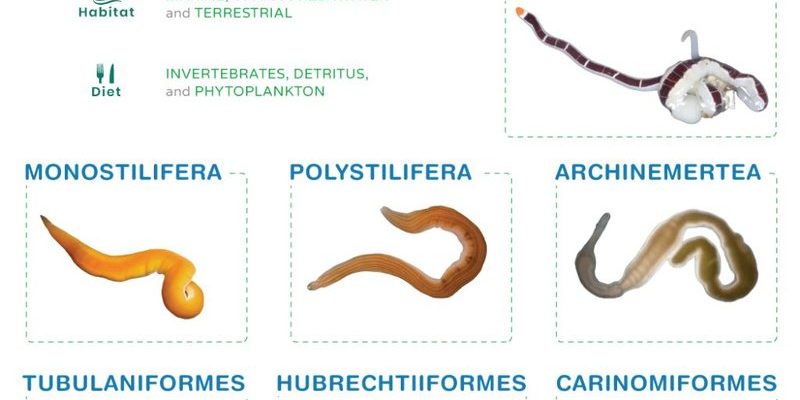
Imagine ribbon worms as the stealthy ninjas of the undersea world. They can be both elusive and surprising. These worms have some remarkable features and behaviors that set them apart from their land-based counterparts. So, let’s dive into some of the most common misconceptions surrounding ribbon worms and uncover the truth about these marine marvels.
What Exactly Are Ribbon Worms?
You might be wondering, “What even is a ribbon worm?” Well, ribbon worms belong to the phylum Nemertea, and they’re known for their long, slender bodies that can reach astonishing lengths—some stretching up to 100 feet! Unlike the standard earthworm we’re familiar with, ribbon worms can appear in a colorful array of shades, from vibrant orange to deep brown.
These worms live in marine environments and can be found in oceanic waters, brackish areas, and even under the sand along beaches. They’re like the hidden gems of the sea, often overlooked because of their elongated, flattened bodies. Ribbon worms have soft bodies and are often a little squishy to the touch, giving them a distinct feel compared to other worms.
Interestingly, ribbon worms have a unique feeding mechanism. They use a specialized structure called a proboscis, which can shoot out and grab prey like a slingshot. It’s a fascinating feature that adds a little bit of drama to their otherwise quiet lives!
Misconception 1: All Ribbon Worms Are Dangerous
One of the most widespread myths about ribbon worms is that they’re dangerous to humans. While some species possess toxins that can affect their prey, don’t worry! Most ribbon worms are harmless to us. They primarily target small creatures like crustaceans and other tiny marine animals for meals.
It’s a little like fearing a cat because it has sharp claws. Sure, those claws can scratch if the cat feels threatened, but they’re not out to get you. Similarly, ribbon worms are not aggressive. If you happen to encounter one while snorkeling or at the beach, it’s best to admire it from a distance rather than think of it as a threat.
In fact, some researchers even study ribbon worms for their potential benefits in medicine! Their unique properties might help us understand various biological processes, which could lead to new breakthroughs. So, rather than fearing these creatures, it’s time to appreciate their role in the ecosystem.
Misconception 2: They’re Just Regular Worms
You might be under the impression that ribbon worms are just elongated earthworms that happen to live in the water. But here’s the thing: ribbon worms are entirely different creatures! While they share the name “worm,” they belong to a completely different classification within the animal kingdom.
Earthworms are members of the annelids, whereas ribbon worms belong to the nemerteans. This might seem like semantics, but it actually indicates different evolutionary paths and biological structures. Ribbon worms possess a more complex body structure and functions compared to our garden-variety worms.
Their proboscis, for example, is a significant differentiator. It’s not just for show—it’s a highly specialized organ that allows them to hunt efficiently. When they shoot it out, it can extend far beyond their body length! That’s a handy tool that your common earthworm just doesn’t have. So, the next time you hear someone call a ribbon worm “just a worm,” you’ll know to correct them!
Misconception 3: Ribbon Worms Are All the Same Color
Another common misconception is that ribbon worms come in only one or two colors. In reality, these fascinating creatures boast an incredible palette, with colors ranging from bright reds and greens to muted browns and yellows. It’s like they’re having a party down in the ocean, showcasing their individuality!
Color variation in ribbon worms often signals different species or adaptations to their environments. For instance, some may be brightly colored to attract mates or blend into the vibrant ecosystem of coral reefs. Others might opt for a more muted tone that helps them camouflage against sandy or rocky substrates.
This diversity adds to their charm and mystery. When you see a ribbon worm, you might think you’re looking at a completely different species each time, thanks to the variety in colors and patterns. It’s a reminder that nature is full of surprises, and ribbon worms are no exception.
Misconception 4: They Have No Real Purpose
Some people might think that ribbon worms are just unimportant creatures in the grand scheme of the ecosystem. Here’s the truth: they play a vital role in maintaining marine health! Ribbon worms contribute to the food chain and help regulate populations of smaller organisms in their environment.
When they hunt for food, they keep the populations of their prey in check. This balance is crucial because too many small marine creatures can lead to overgrazing on essential habitat areas, like seagrasses and corals. By controlling these populations, ribbon worms help maintain the health of the underwater ecosystem.
Plus, as they breakdown organic matter through their feeding, they recycle nutrients back into the ocean. It’s a little like how decomposers work on land, allowing nutrients to be used again. Nature has a way of ensuring that every creature has a role, and ribbon worms definitely pull their weight!
Misconception 5: They’re Invasive Everywhere
Some folks might hear about ribbon worms and immediately think they’re the invasive species ruining ecosystems. While there are a few invasive ribbon worm species, it’s not fair to generalize every type as harmful. Many species are native to their habitats and contribute positively to their ecosystems.
Invasiveness often depends on the environmental context. For example, a ribbon worm might thrive in a new ecosystem, but that doesn’t automatically label it as harmful. It’s much more nuanced than that. Like any creature, the impact of ribbon worms should be assessed on a case-by-case basis.
In some locations, ribbon worms can become problematic, usually due to human activity disrupting habitats. But for the most part, when they’re in their natural surroundings, they’re just playing their role in the marine world, much like everyone else.
Final Thoughts on Ribbon Worms
So, there you have it! Ribbon worms are more than just a misunderstood part of the ocean’s ecosystem. They’re not dangerous, they come in a variety of colors, and they play significant roles in their environments. Understanding these creatures helps us appreciate the complexity of marine life and the delicate balance of ecosystems.
Next time you’re at the beach or watching nature documentaries, keep an eye out for these mysterious ribbon worms. They might just surprise you! Instead of fearing what you don’t understand, let’s celebrate the strange and wonderful variety of life on our planet—and ribbon worms deserve a spot in that celebration.

